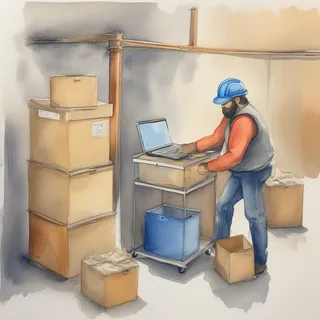When I transitioned to full-time remote work ten months ago, I thought I'd simply swap my office chair for a home desk. What I discovered instead was a complete reimagining of how productivity actually works.
First came the necessity - helping my medically fragile son required flexibility that traditional office life couldn't provide. Then Covid-19 hit, and suddenly everyone was navigating this new landscape. Through trial, error, and plenty of late-night reflection, I've distilled eight core strategies that transformed not just my output, but my entire relationship with work.
1. Master the Art of Routine
Your brain craves predictability more than you realize. When you eliminate the daily decision fatigue around "when should I start?" and "when can I stop?", you free up mental resources for the work that actually matters.
Start and stop at consistent times. I begin each day at 8:30 AM and close my laptop at 5:30 PM. Not because I'm rigid, but because boundaries create freedom. Your specific times don't matter - consistency does.
Schedule your breaks like meetings. Take a 15-minute break at 10:30 AM and 3:00 PM. Set calendar reminders if you must. These aren't suggestions your future self can negotiate with; they're non-negotiable appointments with your sanity.
The magic happens when routine becomes automatic. You'll find yourself naturally winding down as your stop time approaches, and starting with purpose rather than aimless scrolling.
2. Eliminate the Productivity Vampires
Social media, news cycles, and notification badges are designed to hijack your attention. They're incredibly good at their job.
Turn off phone notifications during work hours. Yes, all of them. The world won't end if you don't see that LinkedIn update immediately. Configure your phone to only allow calls from family members if you're worried about emergencies.
Batch your email checking. Check email at 9 AM, 1 PM, and 4 PM. That's it. Email isn't instant messaging, despite what everyone pretends. When you do check, don't feel compelled to respond immediately. Queue up responses and send them in batches.
Curate your information diet. Unsubscribe ruthlessly. That newsletter about AI trends? If you haven't read the last three issues, you don't need it. Your attention is finite - treat it like the precious resource it is.
3. Build Workflows That Actually Work
Whether you're flying solo or working with a team, having clear processes eliminates the mental overhead of constantly deciding "what should I do next?"
For teams: Align on methodology. Whether it's Scrum, Kanban, or something hybrid, everyone needs to speak the same process language. Inconsistent workflows create friction that compounds over time.
For solo work: Create your own framework. Maybe it's a simple Kanban board in GitHub Projects, or a more elaborate setup in Notion. The tool matters less than the consistency.
Work in atomic chunks. Break everything down until each task feels almost trivially small. "Implement user authentication" becomes "Create user model," "Set up password hashing," "Build login form," etc. Small tasks create momentum, and momentum creates results.
Automate the repetitive stuff. If you're doing the same sequence of commands more than twice, write a script. Set up Git hooks for code formatting. Use GitHub Actions for deployments. Your future self will thank you.
Review and refine regularly. Schedule monthly workflow retrospectives, even if it's just you. What's working? What's creating friction? Adapt accordingly.
4. Choose Project Management Tools That Don't Fight You
The best tool is the one you'll actually use consistently. Period.
Don't trust your brain. Seriously. Your memory is optimized for recognizing faces and avoiding predators, not tracking which API endpoint needs refactoring. Write everything down.
Simpler usually wins. That elaborate project management system with seventeen custom fields might look impressive, but if it takes three clicks to create a simple task, you won't use it when you're stressed or tired.
Go cloud-based. Your brilliant task organization doesn't help if it's trapped on your work laptop when inspiration strikes at home. I've used everything from simple GitHub Issues to full Jira implementations. For solo work, GitHub Projects hits the sweet spot. For larger teams, Jira or Azure DevOps provide the structure and reporting that stakeholders love.
Avoid ephemeral systems. Email threads and Slack messages disappear into the digital void. If it's important enough to do, it's important enough to track properly.
5. Accelerate Your Development Workflow
Speed comes from eliminating friction, not typing faster.
Master your editor. Learn the keyboard shortcuts for your most common actions. In VS Code, Ctrl+Shift+P opens the command palette - use it constantly. Set up snippets for boilerplate code you write repeatedly. Configure extensions that catch errors before you run code.
Invest in quality tooling. Whether it's ReSharper for C#, ESLint for JavaScript, or RedGate tools for SQL, good tooling pays for itself quickly. Yes, some tools cost money. Your time is worth more than the subscription fees.
Use version control effectively. Commit early and often with descriptive messages. Use branching strategies that match your workflow. Set up aliases for common Git commands:
git config --global alias.co checkout
git config --global alias.br branch
git config --global alias.ci commit
git config --global alias.st status
Set up your environment once, properly. Use dotfiles, Docker containers, or setup scripts to ensure you can recreate your development environment quickly. Document your setup process - you'll need it again.
6. Respect the Power of Strategic Breaks
This isn't about being lazy. Rest is a productivity strategy.
Take real breaks. Get up from your desk. Walk around. Look at something more than two feet away. Your eyes, back, and brain need the reset.
Schedule breaks before you need them. Waiting until you're exhausted is like waiting until your car runs out of gas to find a station. Take breaks every 90-120 minutes, whether you feel like you need them or not.
Use the Pomodoro Technique strategically. Twenty-five minutes of focused work followed by a five-minute break works well for tasks requiring deep concentration. Don't force it for everything, but it's particularly effective for debugging or learning new concepts.
When work stress starts overwhelming these healthy patterns, having solid coping strategies becomes essential. For comprehensive approaches to managing job-related stress, check out The Modern Office Playbook for Managing Job Stress.
7. Design Your Environment for Focus
Your environment shapes your behavior more than your willpower does.
Establish clear boundaries. Whether it's a dedicated home office or just a specific corner of your living room, create physical and temporal boundaries around your work space. When family members understand that "closed door equals do not disturb," interruptions plummet.
Optimize for flow state. Some people need complete silence; others work better with ambient noise or instrumental music. Experiment and be intentional about your choices. I've found that noise-canceling headphones signal "focused work mode" to both my brain and anyone nearby.
Control your digital environment. Close unnecessary browser tabs. Use a separate browser profile for work if you must. Consider tools like Cold Turkey or Freedom to block distracting websites during focused work sessions.
Prepare your space the night before. Start each day with a clean desk and your tasks already queued up. Decision fatigue is real - eliminate as many small decisions as possible.
8. Cultivate Continuous Growth
The most productive developers aren't just efficient - they're constantly expanding their capabilities.
Learn something new daily. It doesn't have to be a complete course or certification. Read one interesting article, watch one tutorial, or experiment with one new technique. Consistency trumps intensity.
Maintain your passion. Work on side projects that excite you. Contribute to open source. Attend virtual meetups. When your day job feels routine, having something that sparks curiosity keeps the flame alive.
Invest in yourself systematically. Budget time and money for learning. Whether it's books, courses, conferences, or tools, treat professional development as a business expense for your career, not a luxury.
Build a learning habit. I dedicate 30 minutes each morning to learning before checking email or starting regular work. Some days it's reading documentation, other days it's following a tutorial. The key is consistency over perfection.
Connect with the community. Follow thoughtful developers on Twitter, join Discord servers for your technology stack, and engage in discussions. The best learning often happens through conversations with peers facing similar challenges.
Your Productivity Journey Starts Now
These eight strategies aren't magic bullets - they're systems that compound over time. Start with one or two that resonate most strongly with your current challenges. Master those before adding more complexity.
Remember: productivity isn't about cramming more hours into your day. It's about making the hours you have more intentional, focused, and sustainable. The goal isn't to become a coding machine - it's to build a career and life that energizes rather than drains you.
Which of these strategies will you implement first? Your future self is counting on your current self to make the right choices today. Start small, stay consistent, and watch your productivity transform.





